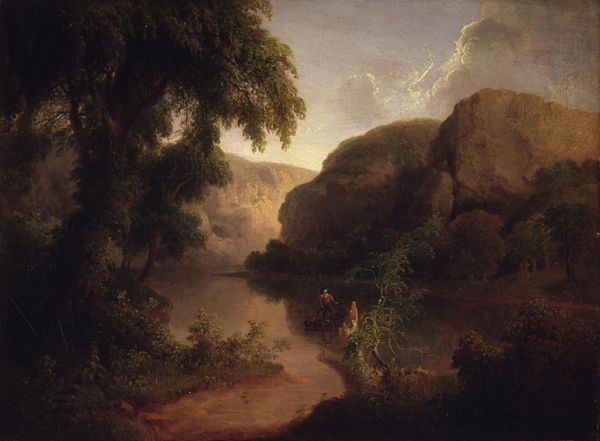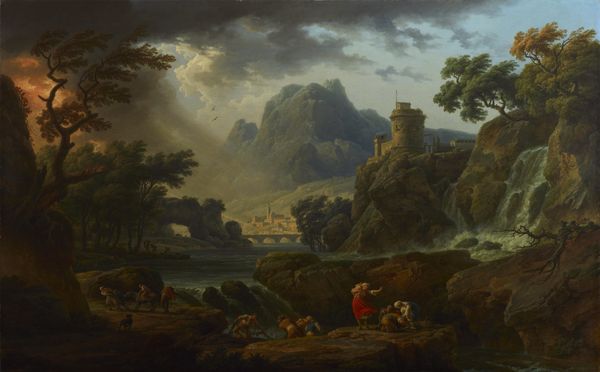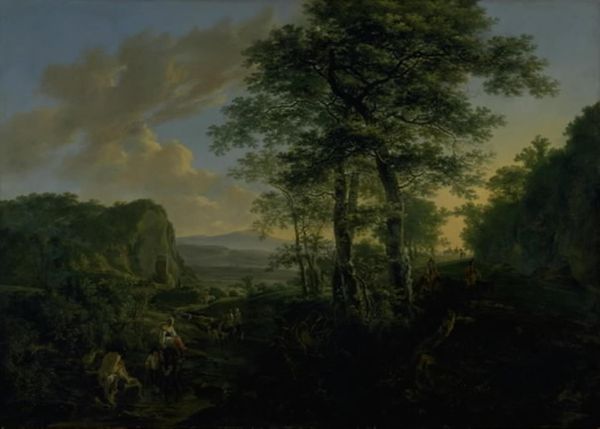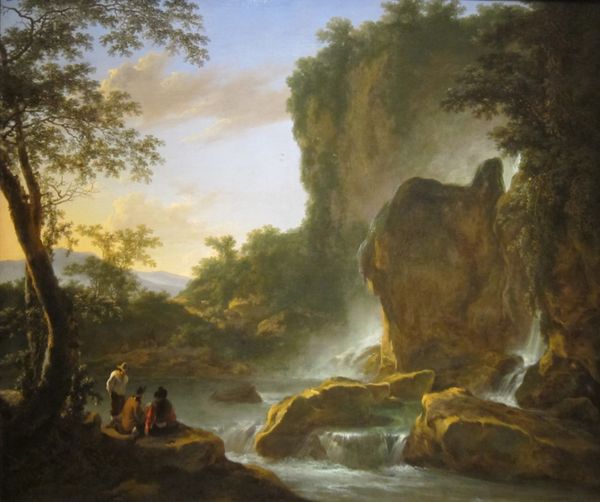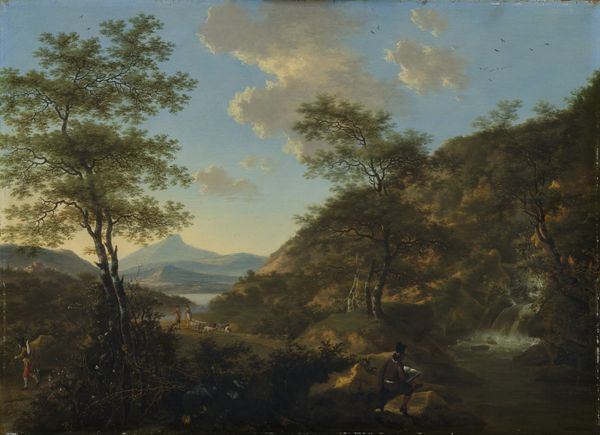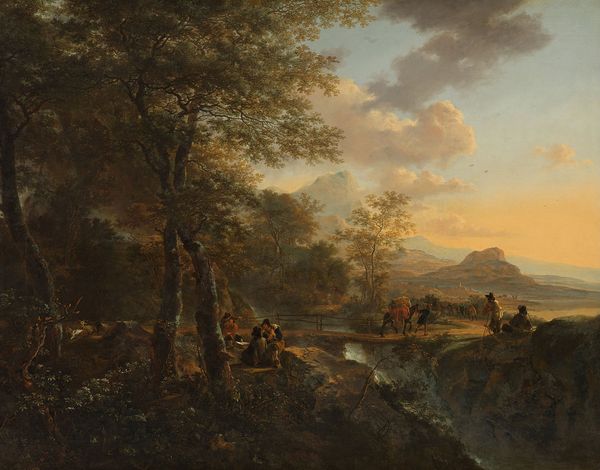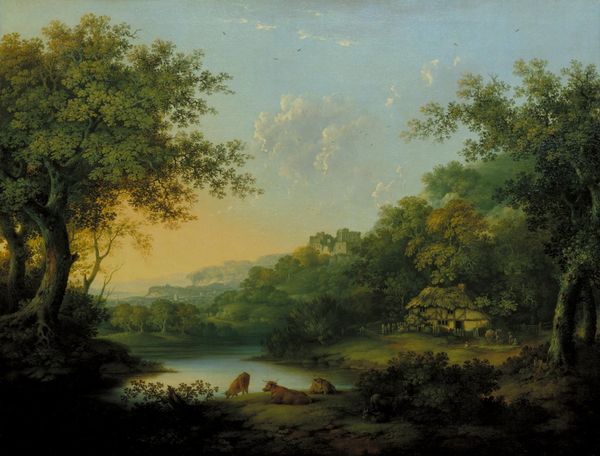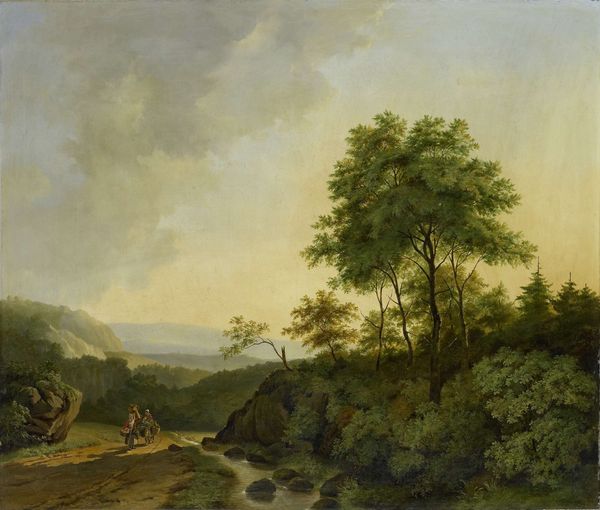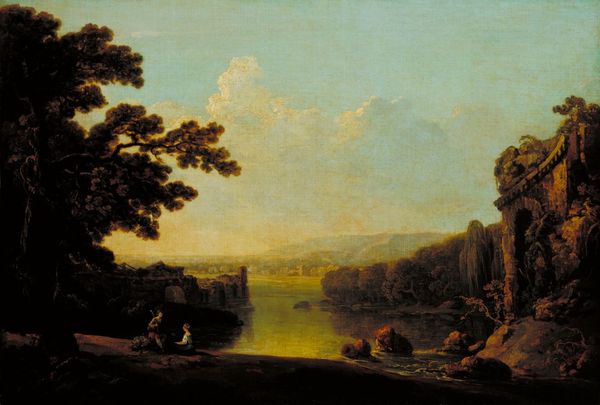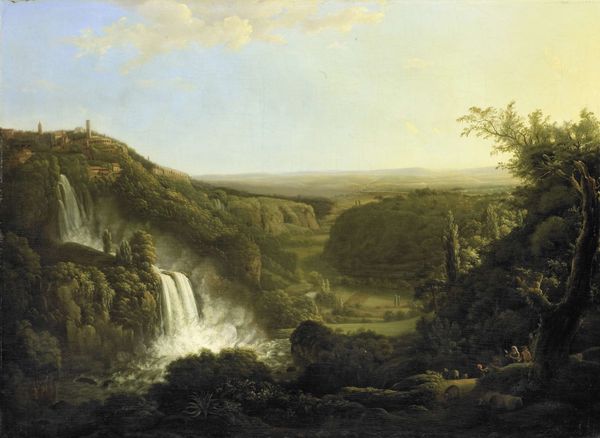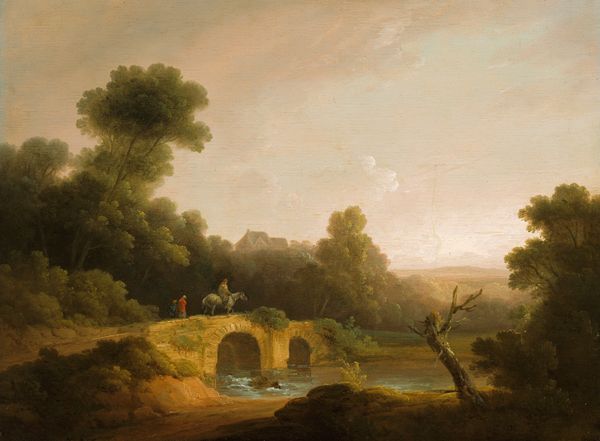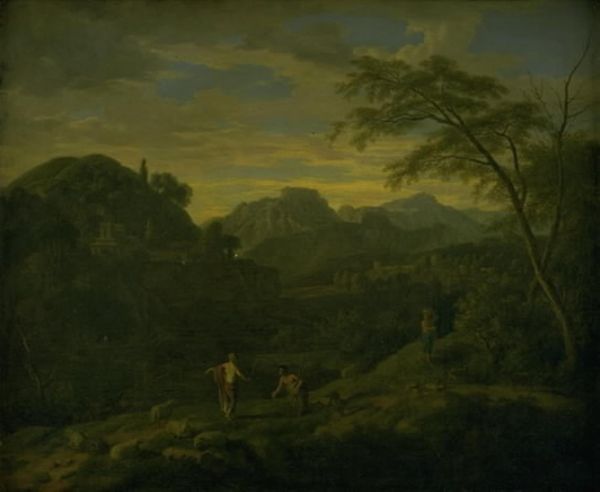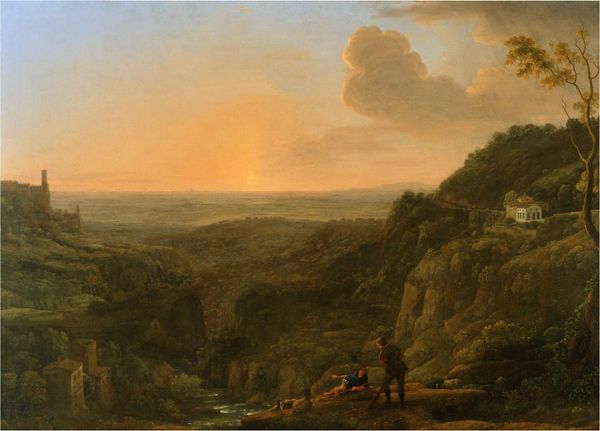
painting, oil-paint, canvas
#
painting
#
oil-paint
#
landscape
#
nature
#
canvas
#
romanticism
#
fog
#
watercolour illustration
#
academic-art
#
watercolor
Dimensions: 37.5 cm (height) x 49.5 cm (width) (Netto)
Editor: Here we have Jens Juel's "A Mountainous Landscape with a Waterfall. Sunrise," created around 1790 using oil paint on canvas. It feels like a scene carefully constructed, a romanticized view of nature. What can you tell me about it? Curator: Look closely at the canvas itself. Consider the sourcing of pigments during that era, the labour involved in their creation, and how those costs dictated artistic choices. This wasn't a readily available, standardized paint; it was crafted. Editor: So, the painting's value comes, in part, from the preciousness of its materials? Curator: Precisely, and from the societal forces driving its creation. Note the landscape—it is not merely observed but produced. How does the idealized vision reflected in the way the paint is applied on the canvas contrast with the raw materiality of the natural landscape itself? Are those cows purely decorative, or do they hint at agrarian structures of the period? What of the figures? Editor: They seem oblivious to the waterfall, like a staging for a painting more than an organic observation. Curator: Indeed. Consider how Juel's choice of subject and his technique contribute to or challenge the hierarchy between landscape painting and more ‘serious’ genres, like history painting, also think of how artistic patronage plays into these depictions. Is he commenting on land use? Editor: So, reading the painting materially opens up discussions about economics, social structure, and even land ownership at the time? I hadn't considered that before. Curator: Absolutely. Examining the material reality and means of production shifts our understanding from a purely aesthetic appreciation to a deeper interrogation of its historical context. The choice and use of these specific materials offer a rich vein of interpretation, don't you think?
Comments
No comments
Be the first to comment and join the conversation on the ultimate creative platform.
